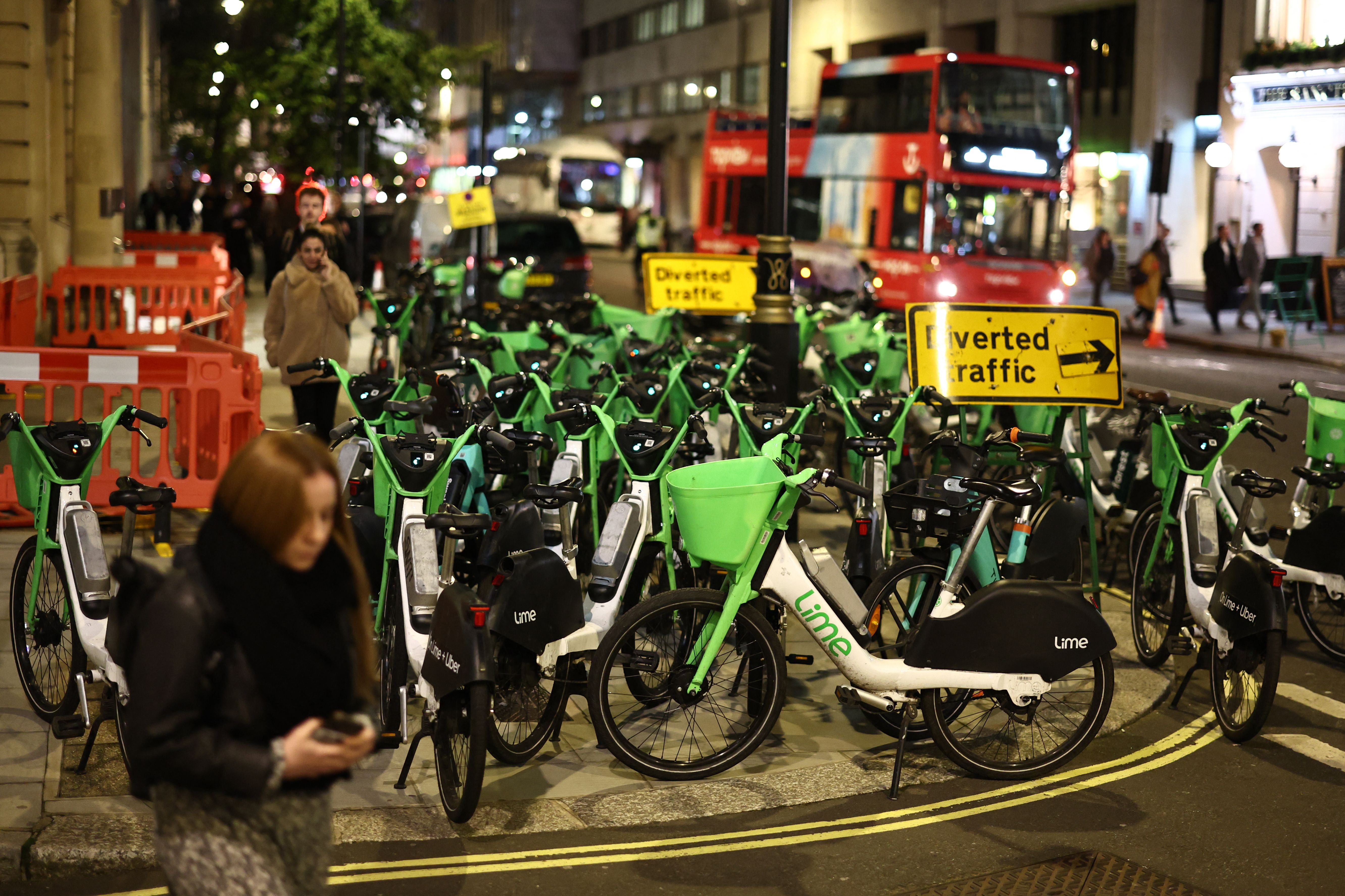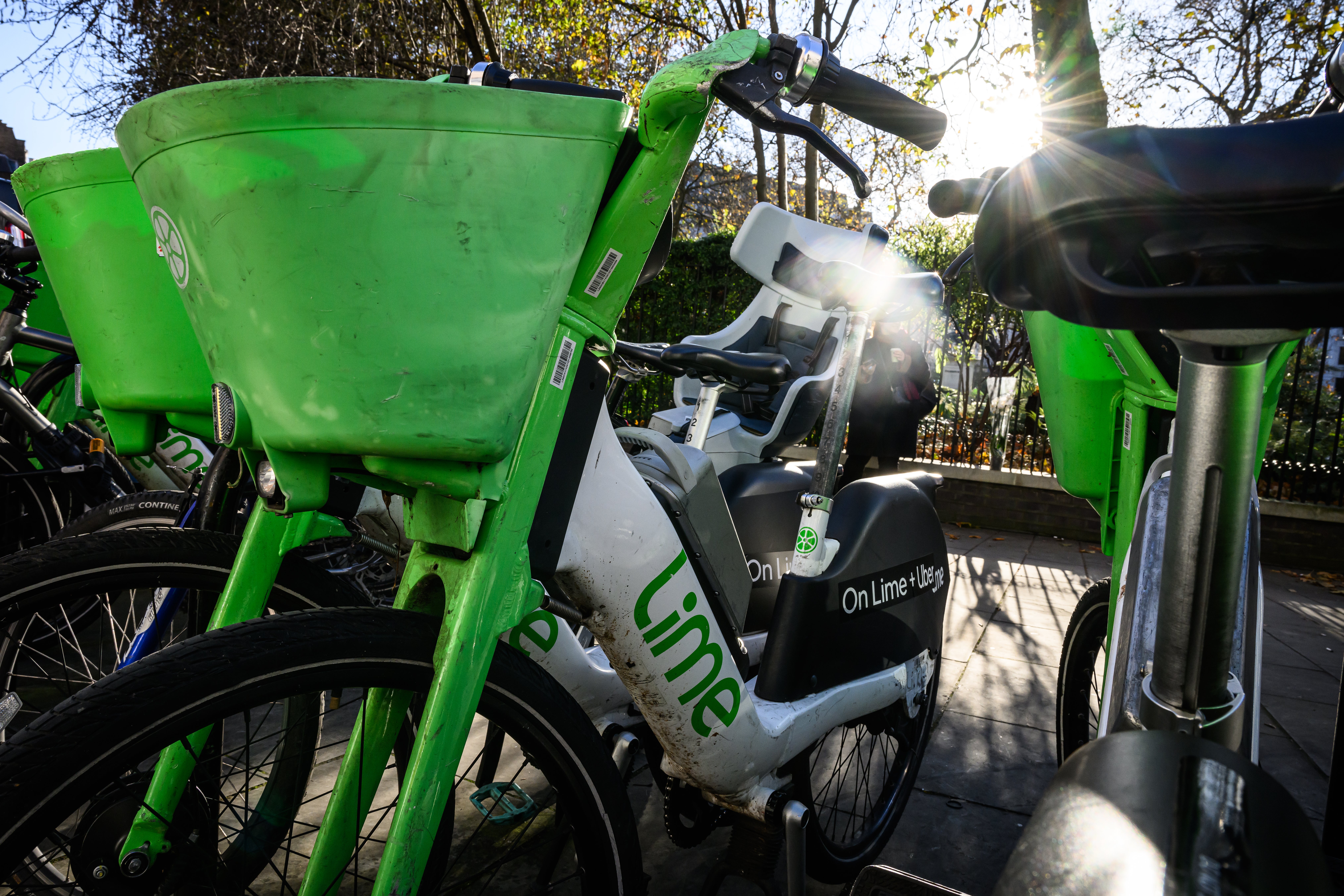This website uses cookies so that we can provide you with the best user experience possible. Cookie information is stored in your browser and performs functions such as recognising you when you return to our website and helping our team to understand which sections of the website you find most interesting and useful.
Your support helps us to tell the story
From reproductive rights to climate change to Big Tech, The Independent is on the ground when the story is developing. Whether it's investigating the financials of Elon Musk's pro-Trump PAC or producing our latest documentary, 'The A Word', which shines a light on the American women fighting for reproductive rights, we know how important it is to parse out the facts from the messaging.
At such a critical moment in US history, we need reporters on the ground. Your donation allows us to keep sending journalists to speak to both sides of the story.
The Independent is trusted by Americans across the entire political spectrum. And unlike many other quality news outlets, we choose not to lock Americans out of our reporting and analysis with paywalls. We believe quality journalism should be available to everyone, paid for by those who can afford it.
Your support makes all the difference.
I’ll get a little Lime bike over, as a treat” – that’s how it started out, and now, at the end of the calendar year, it’s ended up with me broke and feeling like the man who spends too much on candles. I am addicted to Limes, and I’m not alone. If one thing has become clear in 2024, it’s that London is reaching peak Lime bike. From the Hackney Half (marathon) to the Gala dance music festival on Peckham Rye and the Mighty Hoopla pop one in Brixton, nothing has become a more common sight than a sea of dayglo green at the gates of any event.
There are, at any one point, 2,800 e-bikes loose on the streets of the capital per hour. In March, it was reported by the charity Collaborative Mobility UK that there were already nearly 40,000 being used in London, up 10,000 from 2023. Already a staple of Tube stations and street corners in the central part of the city, e-bikes are moving further and further into London’s more suburban boroughs – Haringey council recently announced a trial that would see Forest (Lime bike’s newer, UK-based competitor) and Limes’ hire scheme introduced to New Southgate, Bowes and Edmonton, suburban boroughs on the absolute edges of north London. Lime joined the government’s “cycle to work” scheme, which allowed start-up bosses to pay for their employees’ cycle passes to and from the office. This year Lime even teamed up with a bakery in Shoreditch (where else?) to develop the world’s first e-bike drive-through. Gimmicky? Sure. But it’s testament to Lime’s cultural cachet that people played along with this, even in a self-consciously ironic way.
Unsurprisingly, though, the haters have cometh. As the popularity of the Lime bike skyrocketed, it became more and more inevitable that the inevitable backlash would follow. An article in City AM explored Lime’s dubious relationship with council funding across the city, and resident groups are already complaining about them on neighbourhood and community discussion forums like NextDoor. A few months ago, when mayor Sadiq Khan proposed banning traffic from Oxford Street, Lime bikes were inevitably, obviously, fingered for inclusion in the crackdown.
Just this week, council chiefs attacked e-bike retailers for “unacceptable” numbers littering the streets of London. Lime, the most popular company in London, keeps its actual figures close to its chest – although it has denied suggestions that there are currently up to 40,000 of its units on the capital’s streets. It’s true that over the course of 2024, their Brat-green hordes (what is the collective noun for a group of Lime bikes, do you think? A bushel? A punnet?) have become ubiquitous. But surely for most of us, they’re a symbol of fond familiarity. I’ve grown so used to them piled in their hundreds outside Finsbury Park station that when I watch the white vans take them away to be recharged and replaced, I feel a kind of maternal yearning for their safety and swift return.
But not everyone feels the same. This year’s boom in e-bike use has led to repeated clashes with local councils, and Transport for London (TfL) last month announced they would take action against reckless parking outside Tube stations – to be fair, they also announced funding of £1m for 7,500 new allocated parking bays, with a further 800 by next summer, which proves that the boom, despite the critics, is going nowhere soon. Lime now operates in 230 cities around the world. Since it began in 2017, launching in San Francisco with just 125 bicycles, it’s raised nearly $2bn in funding. Forest, which followed it in 2019, has raised $17m since its foundation in – where else? – London.
“If you ask Londoners, they see Lime as critical transportation infrastructure,” says Wayne Ting, the company’s chief executive. It’s hard to disagree with him. But then again, I would agree, wouldn’t I? I love illegal parking and going “whee” down big hills.
What divides us along these neon-green lines in the sand? As time goes on it’s become more clear that it’s the end point of a generational split, a zeitgeist playing out in the bicycle lanes. From where I see it, it’s hard to ignore a kind of nimbyism implicit within anti-e-bike discourse. It’s fine to have them in London, the attitude seems to go, but just not on our nice leafy streets.
The reality is that Lime bikes are often used for the first or last leg of journeys, usually to and from Tube stations, in increasingly suburban parts of London. But commuters, particularly younger commuters, are being forced into these areas, once stereotypically associated with older people or young families, because they can’t afford to live anywhere else. Nor can they afford a car to get them there or rely on a labyrinthine system of trains and buses either.

This argument is lost on some people. Last month, residents of one area in leafy Kingston upon Thames used angle grinders to destroy e-bikes left in their private car park. “We are really p***ed off and we’ve had enough,” they sniffed, adding that the bikes were technically “fly-tipped” (generally speaking there is no more bleeding-heart nimbyish issue than fly-tipping).
If you’re younger, you love Limes, particularly if you don’t drive (and who owns a car in London?). They’re sustainable and fast, a cheaper alternative to Ubers that are unreliable if you live anywhere outside Zone 2 (and if you’re south of the river, even that’s marginal). If you’re older, though, or indeed just older-coded (more sensible) you see them as a menace on the city’s streets. In Brent, where hundreds of spent bikes are dumped outside Wembley Tube, the leader of the local council says he wants them banned if regulations are not drawn up. Limes had existed in the borough for five years already, as part of a sustainable travel scheme. But now they’ve had enough. “I want them rounded up and crushed,” one local 86-year-old told The Guardian. “Life’s bad enough when you’re getting older and you’re not very steady on your feet without these bikes in your way. Good riddance.”
Admittedly, even being in the pocket of Big Lime I can recognise that there are issues with e-bike use, mainly safety ones – nobody obeys the rules of the road on a Lime, and despite the fact you’re supposed to get money off if you wear a helmet, literally nobody does this. One report from The Times showed Lime bike users skipping red lights 84 times in just one hour in one busy south London location. Research from dashcam company Nextbase analysed 80 different London junctions and found that 41 per cent of e-scooter riders observed rode through red lights, while just 28 per cent of pedal cyclists did the same.
No wonder, then, that critics say we’re entering a sort of e-bike Wild West; a kind of Zone 1 Yellowstone. In aptly named Westminster – which sees the highest e-bike use in the world, with 630,000 trips per month – new government powers were announced this week which would see fines for parking or dumping bikes haphazardly on the cobbled streets of SW1.
“This is the beginning of the end for the Wild West model of dockless e-bikes in London,” Kensington and Bayswater MP Joe Powell said of the ruling.
Of course there should be more regulation when it comes to safety, and perhaps more than that “can you spot the trees” test for drunkenness Lime bike inflicts on you when you try to pay for a ride after 11pm on a Saturday. They go too fast (in London, the speed limit for Lime bikes is 15.5mph, while for scooters it’s 12.5mph) and feel too fun not to need it. But conversations about Lime bike ubiquity too often focus more on their status as a nimbyish nuisance than as a potential safety hazard for users. If councils and residents’ groups spent half as much time talking about how often the seats twist off or the brakes squeak and fail, rather than how much they hate bikes being abandoned beside their favourite coffee shop, we’d all be a lot better off for it.

And yet, there is something oddly pensive and rewarding about a Lime bike ride. Opining on this in The Guardian recently, writer Miranda May talks about the inner peace and connection she discovered while whizzing about central London on Christmas Day, following the death of her parents. I also spent most of last Christmas Day on a Lime bike, and can confirm it is great – the roads are empty, and you are the king of them, full of mince pies and adrenaline. You have to admit that there is something freeing about flying through the streets with the greatest of ease on an e-bike, all your worldly possessions in a lime green basket on the front that someone has almost certainly p***ed in the night before.
What else do we share, except Lime bikes? What other goods pass from hand to hand, day by day, bringing joy and passion? Most of us would struggle to remember the last time we took out a library book. The pandemic, even as an event now in distant memory, kind of ruined the whole passed-around biscuit tin scenario. We don’t share! We don’t indulge in things from our childhood that make us happy, like books and biscuits and going “whee” with wild abandon! Except when it comes to the Lime bike. For all its flaws, we need it. Long may she reign.



 Africana55 Radio
Africana55 Radio 
